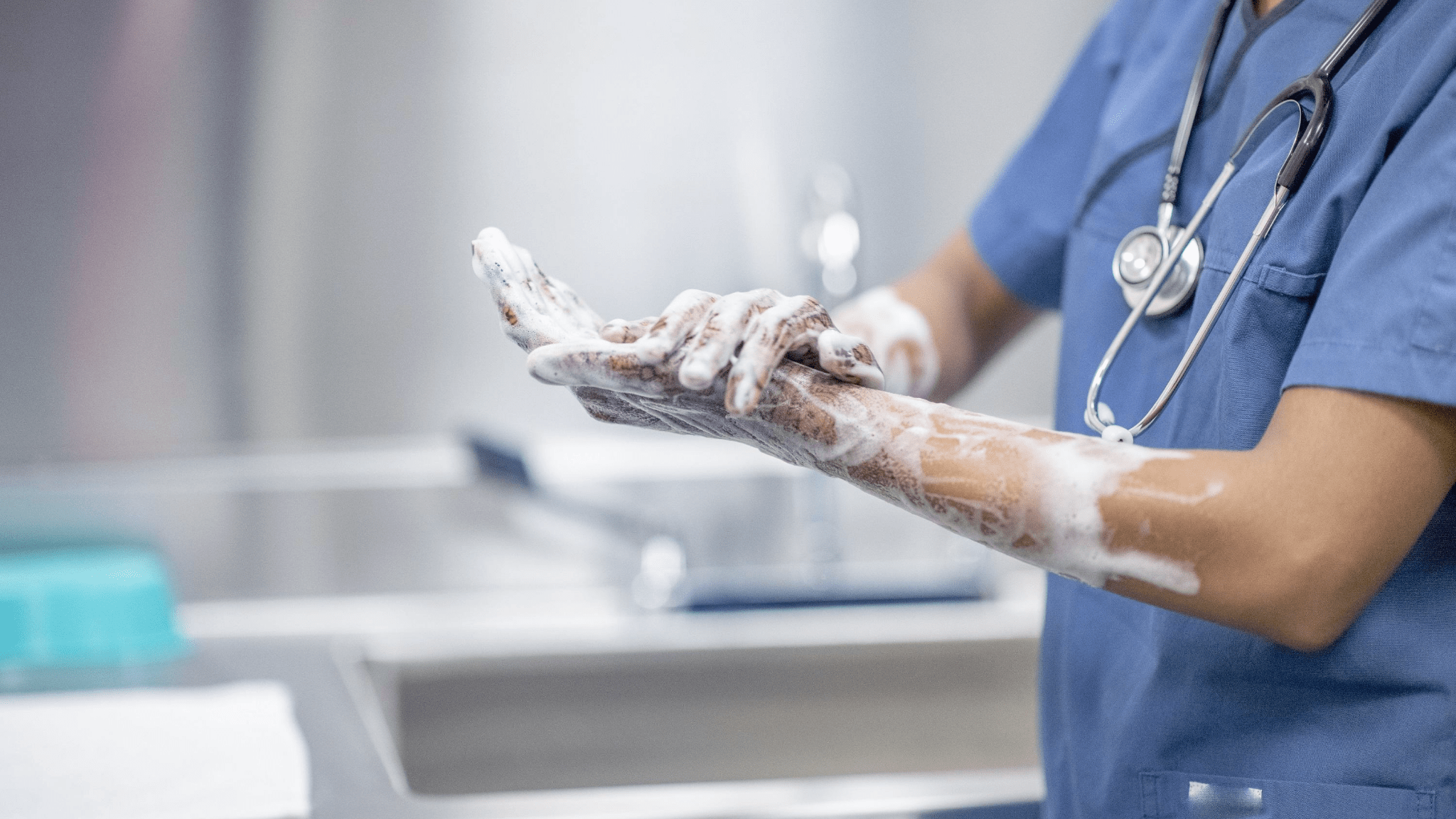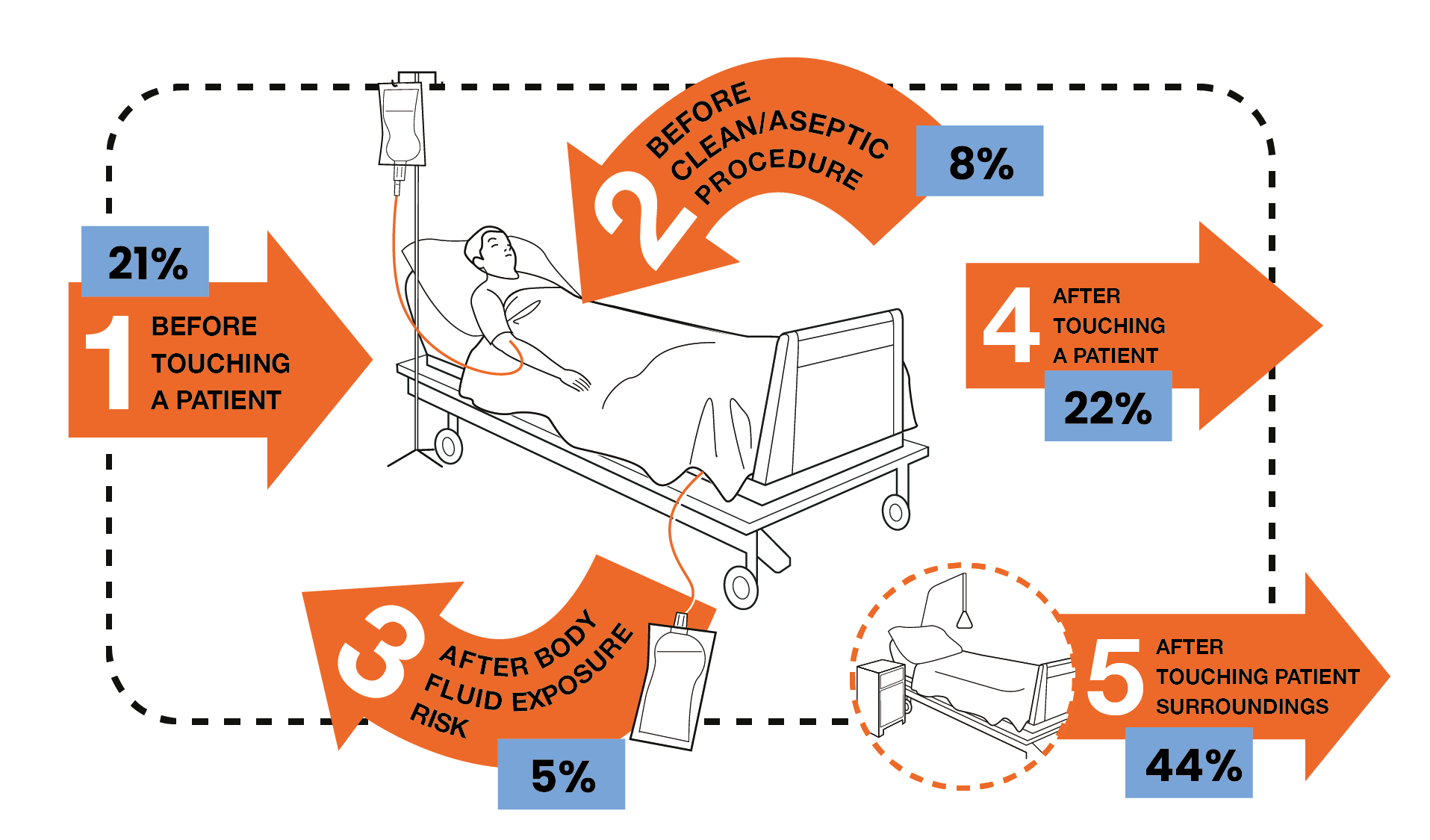
Table of contents:
Ask any healthcare professional about the importance of hand hygiene, and you'll get variations on the same answer. Everyone agrees that it’s an essential part of the overall hygiene efforts of any healthcare facility. It’s one of the basics of any anti-infection protocol. It’s simply a must and everyone knows it.
Which is strange, when you realize that getting staff to regularly follow hand hygiene programs has long been a challenge throughout the industry. Countless initiatives have started with the same goal of increasing the frequency and effectiveness of handwashing but moving the needle on this metric has met with only partial and scattered successes.
While no one reason stands out to explain this failure, hand hygiene remains a priority for hospitals and clinics and not just for obvious patient outcome reasons.
Combating hospital acquired infections (HAI) is a standard challenge across the industry and hand hygiene can be a powerful force against it. When patients acquire an HAI, the hospital is not only forced to take on more work and expend more resources, but it is typically not eligible for reimbursement of those costs from third-party payers, like Medicaid and most private insurers.
So on top of patient outcome and reputational concerns, there are real costs associated with HAIs as a result of poor hand hygiene.
This is the question that complicates efforts to improve hand hygiene in healthcare facilities. New plans and systems can be introduced, but without a baseline and relevant metrics, how do you know if you’re making progress?
There have been no conclusive studies that prove that a given improvement in hand hygiene will produce a resulting improvement in HAI rates, primarily due to the difficulty of measuring everything without technological automation. However, many peer-reviewed studies on the topic of hand hygiene have been produced and there is a clear correlation between a stronger emphasis on hand hygiene and a decrease in HAI incidents.
Ironically, the COVID pandemic helped to create ideal circumstances for a closer look at the effects of hand hygiene initiatives due to sudden greater awareness of the issue. Studies conducted during this time show the dramatically higher rates of compliance are possible and the assumed resulting decrease in HAIs is real.
The Leapfrog Group, which does research into matters of patient safety and the quality of hospital care, conducted its own study into how best to measure hand hygiene. They identified 5 key opportunities when hand washing is necessary. If a healthcare worker washes their hands during all the 5 opportunities, they are considered to be 100% compliant. If they miss any opportunity, it affects their compliance score. The compliance score is measured as Compliance % = Wash Events/Wash Opportunities *100. The 5 opportunities are illustrated here:

So hand hygiene is a simple process that delivers significant benefits but is hard to implement? Why should it be, given the low, almost non-existent costs on one side and valuable gains to be made on the other?
Here are a few of the most common reasons.
As with so many other aspects of workplace organization, automation and data have a role to play in the solution to hand hygiene challenges. However, until now, the technologies that automate the collection of compliance data have suffered from various shortcomings:
Our dedicated solution to improved hand hygiene leverages the power of location tracking with IoT-powered reporting and monitoring capabilities. It addresses the issue of hand hygiene while satisfying business needs and meeting technical standards expected from today’s “smart” facilities.
Here’s why partnering with Kontakt.io to boost hand hygiene compliance and achieve better patient and business outcomes is the right path forward:
The challenge of improving hand hygiene remains but modern tech solutions can answer the call in ways previous generations of solutions could not. Talk to us today about how easy it is to get started on the path to all the benefits that increased hand hygiene provides.
Read also our article: How IoT is Supporting Hand Hygiene Compliance & Better Patient Care.

How smart hospital solutions are delivering better clinical outcomes, greater efficiencies, and higher patient satisfaction through digital transformation using technologies like Internet of Things (IoT) and Artificial Intelligence (AI)
Turn your workspace into a modern one with Kontakt.io spatial intelligence solutions.
Learn how we can help improve employee experience, decrease carbon footprint, and
help you understand how your space is utilized in a SIMPLE & AFFORDABLE way.